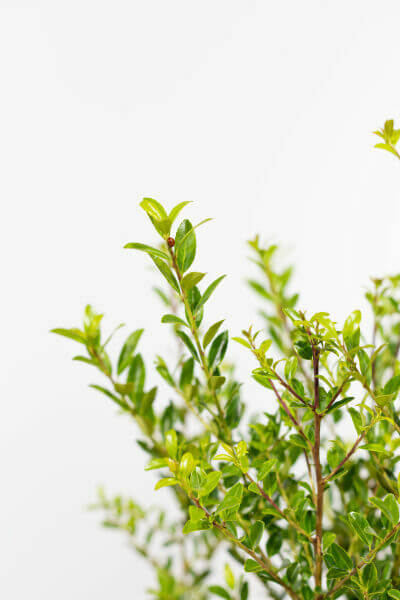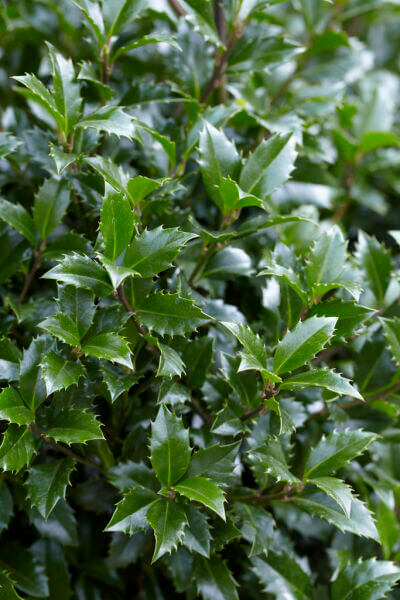Hedging Plants For Large Gardens
Hedging Plants For Large Gardens
Blog Article
Tall Hedging Plants For Maximum Privacy
Boost your garden's allure with lush hedge varieties such as Yew (Taxus), Thuja, Laurel, Photinia, and Bamboo, celebrated for their structural integrity and ecological advantages.
Yew and Thuja provide evergreen protection and winter strength, while Laurel provides fast growth and broad, fragrant leaves.
Photinia includes seasonal charm with its dynamic red foliage, and Bamboo provides a low-maintenance, tranquil ambiance.
These hedges enhance air quality, lower noise, and develop tranquil, private spaces.
Proper planting, spacing, and upkeep guarantee vigorous growth and eco-friendly harmony.
Explore how these lavish ranges can raise your garden's appeal and well-being.
Secret Takeaways
Change Your Garden With Lush Hedge Ranges
- Select Yew for its dense, evergreen growth and exceptional durability.
- Opt for Laurel for its fast growth and broad leaves, guaranteeing fast privacy.
- Select Photinia for its lively seasonal foliage, which turns a striking dark red.
- Utilize Bamboo for a low-maintenance, winter-hardy hedge with aesthetic appeal.
- Space plants 2-3 per meter and prune routinely for optimum development and health.
Popular Hedge Plants
When transforming a garden with lush hedge varieties, it's important to consider popular hedge plants such as Yew, Thuja, Laurel, and Photinia due to their distinct qualities and advantages.
Yew (Taxus) is extremely respected for its longevity and dense, green development, making it a prime option for sustaining landscapes.
Thuja is kept in mind for its evergreen foliage and robust winter season strength.
Photinia includes seasonal vibrancy with red leaves that darken with time, creating vibrant visual appeal.
Laurel provides rapid growth and fragrant, broad leaves, suitable for quick privacy.
In Addition, Bamboo is an excellent option for atmosphere, offering a low-maintenance, winter-hardy option that enhances the garden's visual with its classy, swaying walking sticks.
These selections cater to a range of horticultural requirements and preferences.
Benefits of Garden Hedges
Garden hedges offer a plethora of advantages, making them a valuable addition to any landscape. These natural barriers are affordable to implement and supply considerable wind protection, enhancing air flow and contributing to sound decrease. The thick foliage of hedges like Thuja and Beech makes sure personal privacy by obstructing exposure, producing a remote and peaceful environment.
Hedges likewise play an important role in microclimate policy, providing a steady environment that fosters plant growth and decreases temperature level variations. Their detailed leaf structures filter contaminants, enhancing air quality and adding to a much healthier garden ecosystem.
Additionally, hedges master sound reduction, taking in and deflecting acoustic waves to lower ambient noise levels. This double functionality of providing both visual and acoustic personal privacy boosts the overall harmony and aesthetic appeal of any garden.
Planting and Maintenance Tips
For an effective hedge, meticulous preparation of the planting location is essential. Make sure the soil has proper pH and drainage to support strong root advancement.
Space the plants properly for the picked species. Water the hedge regularly during its preliminary growth phase, changing as needed with seasonal changes.
Carry out a systematic pest control and illness prevention method, using organic or chemical treatments when needed. Regularly examine for aphids, mites, and fungal infections.
Apply mulch to retain moisture and suppress weeds. Seasonal pruning promotes dense development and air circulation, important for plant health.
Following these guidelines will help you cultivate a lively, well-maintained hedge that enhances the charm of your garden.
Spacing and Cutting Guidelines
Spacing and Trimming Guidelines
Proper spacing and trimming are essential for cultivating healthy, aesthetically appealing hedges. Appropriate spacing makes sure each plant receives sufficient nutrients, light, and air flow.
Follow these guidelines for ideal hedge maintenance:
- Spacing: Position hedge plants 2-3 plants per meter to encourage robust development.
- Pruning Strategies: Regular pruning is essential for maintaining wanted hedge height and shape. Cut brand-new growth in summertime and cut back older wood during winter.
- Seasonal Care: Adjust trimming approaches and schedules according to seasonal requirements to make sure plant health.
- Hedge Height: Routinely screen and trim to maintain the wanted hedge height and achieve consistent looks.
Following these steps will ensure your hedge prospers, improving both the appeal and functionality of your garden.
Selecting the Right Hedge
Picking the Right Hedge
Choosing the appropriate hedge involves assessing factors such as fully grown height, foliage density, and environmental strength. Successful hedge plant choice requires comprehending each species' growth characteristics and site-specific adaptability.
For instance, Yew (Taxus) provides excellent durability and thick development, while Thuja is significant for its winter durability. Additionally, thinking about maintenance requirements is essential; fast-growing species like Laurel or Privet demand regular trimming, whereas low-maintenance options like Bamboo or Ivy might be preferable for those looking for minimal upkeep.
Ecological factors such as soil type, light schedule, and wetness conditions ought to likewise guide the choice process. This mindful method makes sure the selected hedges will flourish, providing both visual and functional benefits to the garden landscape.
Shipment and Planting Recommendations
To ensure your hedge plants flourish, they need to be provided by specialized carriers and planted quickly upon arrival.
Follow these vital actions for successful planting:
- Soil Preparation: Enhance the soil with organic matter to enhance drain and nutrient content.
- Planting Depth: Create a trench twice the width and equivalent to the depth of the root ball.
- Watering Methods: Water thoroughly after planting, keeping the soil regularly moist but not filled.
- Mulching: Apply a layer of mulch to maintain wetness and reduce weeds.
Customer Support and Service
Offered the crucial role of timely support in horticultural pursuits, our client assistance group is readily available six days a week through telephone, email, and social media to provide professional advice and swiftly address any concerns. Their commitment to fast action times makes sure customer satisfaction by dealing with queries related to plant health, optimal planting methods, and maintenance schedules.

Accessibility
Within 48 hours
This detailed support system, reinforced by an outstanding 9.3/ 10 customer score, highlights our dedication to boosting the gardening experience for every single customer.
Frequently Asked Questions
The Length Of Time Does It Take for Hedge Plants to Develop?
Hedge plants normally require one to three years to become fully established, with the exact period differing by types and growing conditions.
Efficient care throughout this crucial period is vital for robust growth. Consistent watering, vigilant weed control, and appropriate fertilizer application are pivotal in Additional hints promoting strong root development.
For instance, fast-growing types like Laurel might develop more rapidly, while slower-growing varieties such as Yew might take longer. Thorough upkeep speeds up the establishment process, leading to thick and healthy hedges.
What Are the very best Hedge Plants for Personal Privacy?
The concern of the very best hedge plants for privacy involves examining evergreen and deciduous alternatives.
Evergreen hedges like Thuja, Laurel, and Cypress offer year-round coverage, ensuring constant privacy.
In contrast, deciduous hedges such as Beech use seasonal personal privacy, shedding leaves in cooler months.
Secret upkeep suggestions for privacy hedges consist of regular cutting, fertilizing in spring, and appropriate spacing-- generally 2 to 3 plants per meter.
Additionally, constant watering and diligent weed elimination are essential for promoting healthy, thick growth.
Can Hedge Plants Attract Wildlife to My Garden?
Yes, hedge plants can bring in wildlife to your garden by offering necessary advantages like shelter, food, and nesting sites, consequently enhancing regional biodiversity. Yew, holly, and laurel are outstanding for bring in birds, while ivy supports a variety of pests.
However, it is very important to note that there are some disadvantages, such as increased upkeep to manage insects and regular upkeep. Thoroughly selecting and preserving hedge ranges can help stabilize these advantages and disadvantages, eventually fostering a sustainable and lively ecosystem in your garden.
Exist Any Flowering Hedge Plants Available?
Yes, there are flowering hedge plants readily available that can enhance the charm of your garden.
For instance, Elaeagnus, likewise referred to as Olive Willow, produces fragrant white flowers in the fall, including a touch of beauty.
Photinia, another popular option, showcases lively red leaves that grow into an abundant green, developing a vibrant visual result throughout the seasons.
To guarantee these plants grow, it's necessary to practice proper pruning methods and seasonal upkeep, such as cutting new growth in the summertime and cutting down in the winter season.
These measures will help maintain the health and aesthetic appeal of your flowering hedges.
How Do I Prevent Insects in My Hedge Plants?
To avoid insects in hedge plants, utilize natural bug control techniques and preserve appropriate hedge care. Introduce useful bugs like ladybugs, which victimize damaging bugs, to develop a well balanced environment.
Frequently examine your hedges for indications of problem and without delay get rid of any afflicted parts to avoid the spread. Guarantee the health of your hedges by applying well balanced fertilizers and supplying appropriate water.
Make use of mulching to keep soil moisture and proper spacing to reduce plant tension and promote robust development. These practices jointly help in reducing pest concerns and maintaining a healthy hedge.
Conclusion
In essence, selecting the right hedge ranges such as Yew, Thuja, and Laurel can change any garden into a relaxing haven. These plants provide year-round plant, improve aesthetic appeal, and offer useful advantages like sound reduction and wind protection.
Correct planting methods, accurate spacing, constant watering, and seasonal trimming are vital for optimum growth.
Reputable delivery services and skilled client assistance guarantee a seamless experience from purchase to planting, making it easier than ever to elevate your outside space.
Garden hedges provide a wide range of advantages, making them a valuable addition to any landscape. These natural barriers are cost-efficient to execute and provide considerable wind protection, improving air circulation and contributing to sound reduction. The dense foliage of hedges like Thuja and Beech makes sure privacy by blocking visibility, producing a serene and secluded environment.

Pruning Methods: Regular pruning is essential for keeping preferred hedge height and shape. Trim new development in summertime and cut back older wood during winter season.
Report this page